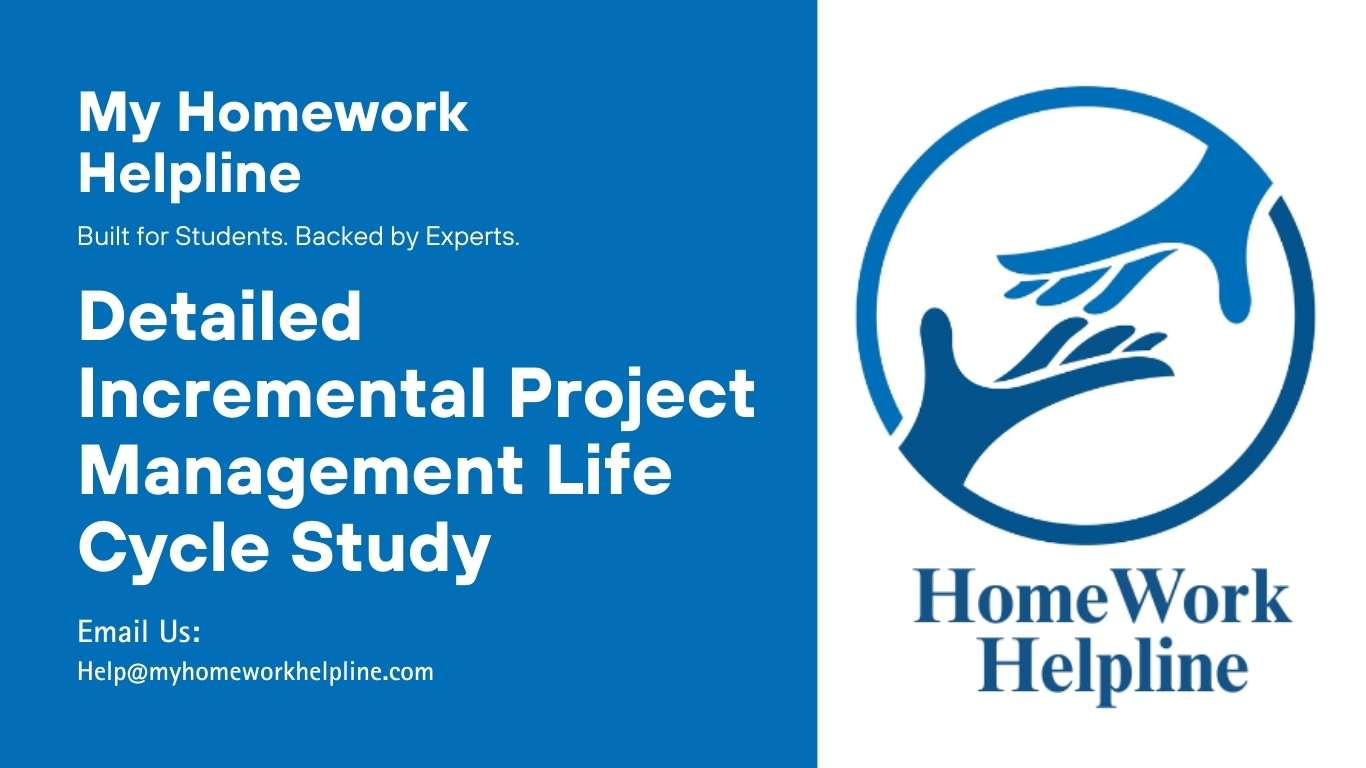The Five Project Management Life Cycles: An Academic Analysis
Shad et al. (2021) describe the project management life cycle as the steps to be undertaken to ensure a project is successfully managed from its start to the end. The steps defined by Shmidt are predictive, iterative, incremental, agile, and hybrid. The Kitchen Heaven project involves developing a new retail store for the business’ new branch. Therefore, this paper discusses these life-cycle steps in detail and justifies the lifecycle to be used to complete the Kitchen Heaven Project.
The predictive life cycle heavily relies on teamwork as the project management team sets up the project’s details such as time, cost, and scope early in the project. The team formulates the entire project’s work plan where the work is split into either sequential or overlapping phases (Ma & Kim, 2015). The team also has the option of progressive elaboration where they only conduct high-level planning for the entire project but leave out the detailed planning to be done as the phase gets nearer. That is, detailed planning is done only for the work required to be completed soon. Generally, in this cycle, the project’s scope is highlighted from the start, but the planning is not completely mapped out at the start but only as the work progresses.
Understanding the five project management life cycles is essential for academic and professional growth. Whether you’re studying predictive, agile, or incremental models, having expert guidance can greatly improve your assignments and research quality. Our Business Studies Homework Helpline offers personalized academic support, in-depth analysis, and professional writing services to help you excel in your coursework and produce high-quality, well-structured papers.
In the iterative project management lifecycle, the project’s steps to be completed are outlined at the project’s beginning. The project management team, however, modifies the time and cost it will take to complete the project as the project’s phases are done. These changes result in repeated steps throughout the project’s scope, and these repeated steps are the reasons the team can drive the project’s value as the project’s steps are refined over time (Kyeremeh, 2019).
The incremental project life cycle involves having deliverables set through multiple repetitions. It can also be described as an adaptive lifecycle because the project’s functionality increases over the set time. This is because each repetition is set to produce a feature to the overall deliverable. Even though it may seem that the life cycle highly depends on repetitions, the main component here is the increments as they are utilized to collect feedback. The increments are planned at a time, enhancing the delivery of each life cycle step (Kyeremeh, 2019).
The agile project management lifecycle is iterative and incremental to ensure the project’s success. The project management team approves an increment to be produced before an iteration begins. These iterations reduce uncertainty as they are rapid, enabling the team to address the cost and risk issues as they arise (Bergmann & Karwowski, 2018). According to Gabriel et al. (2021), this project management life cycle is the most effective to manage projects that require a lot of changes.
The hybrid project lifecycle has elements of both the agile and predictive life cycles. The project management team selects each lifecycle to a specific project phase depending on its requirements. The team then works to ensure that each approach used in each phase complements each other to ensure each project need is efficiently addressed (Gabriel et al., 2021).
The best life-cycle to be used to complete the Kitchen Heaven Project is the incremental lifecycle. This is because completing the project involves multiple steps such as initial stocking, store build-out, and grand opening, which can be treated as increments, resulting in better deliverables due to increased adjustments and refinement with each increment. Additionally, each increment results in gathering feedback, resulting in the project’s success. Furthermore, the project calls for stakeholder engagement which is encouraged by the incremental lifecycle as key stakeholders like Jake Peterson and Jill Overstreet will be involved in each increment. The lifecycle also enables risks to be identified and mitigated at each step, ensuring risk reduction. Thus, the incremental lifecycle is best suited for completing such a project given the outlined phases, risk mitigation, and the flexibility required, ensuring the project’s success.
References
Bergmann, T., & Karwowski, W. (2018). Agile project management and project success: A literature review. Advances in Intelligent Systems and Computing, 783, 405–414.
Gabriel, S., Niewoehner, N., Asmar, L., Kühn, A., & Dumitrescu, R. (2021). Integration of agile practices in the product development process of intelligent technical systems. Procedia CIRP, 100, 427–432. https://doi.org/10.1016/j.procir.2021.05.099
Kyeremeh, K. (2019, September 5). Overview of system development life cycle models. Papers.ssrn.com. https://ssrn.com/abstract=3448536
Ma, J., & Kim, H. M. (2015). Predictive usage mining for life cycle assessment. Transportation Research Part D: Transport and Environment, 38, 125–143. https://doi.org/10.1016/j.trd.2015.04.022
Shad, F., Gul, Dr. M., & Zahid, Dr. M. (2021). Leadership and decision making in the project management life cycle: A knowledge management perspective. Journal of Business & Tourism, 5(2), 89–97. https://doi.org/10.34260/jbt.v5i2.142

